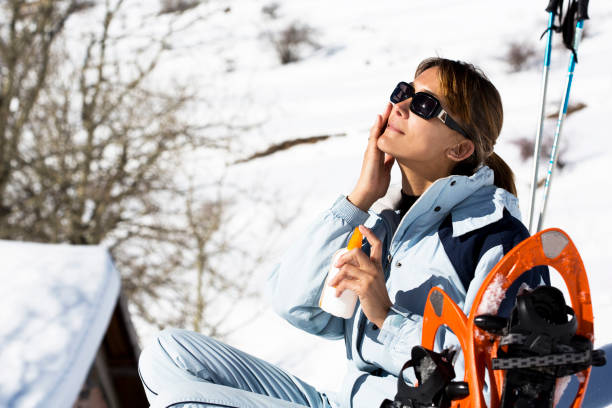
Staying Protected from UV Rays in the Winter
Kimberly StoneWhen most people think of sunscreen, they picture sunny beach days or hot summer afternoons. However, the truth is that wearing sunscreen is just as important in the winter as it is in the warmer months. While we may associate winter with clouds, snow, and cold temperatures, the sun’s harmful UV rays don’t take a break when the seasons change. In fact, there are several reasons why applying sunscreen during the colder months is essential for maintaining healthy skin. Let’s dive into why winter sunscreen protection is a must.
UV Rays Are Still Active in Winter
Even when the weather feels chilly or overcast, the sun’s ultraviolet (UV) rays can still penetrate the atmosphere. There are two main types of UV rays that affect your skin:
UVA Rays: These rays penetrate deep into the skin and are responsible for aging, wrinkles, and skin cancer. They remain constant throughout the year, whether it’s hot or cold outside.
UVB Rays: These rays cause sunburn and play a key role in the development of skin cancer. Although UVB rays are stronger in the summer, they can still damage your skin in the winter months, particularly on bright, sunny days.
In fact, UVB rays can be just as harmful in the winter because the sun’s rays can reflect off snow or ice, intensifying their effects. Even if it’s cloudy or overcast, UV radiation can still reach you, so it’s important to protect your skin year-round.
Living in Colorado, you’re at an even higher risk for UV exposure during winter. Snow is highly reflective, meaning it can bounce UV rays back up to your skin, causing more harm than you might expect. This increased reflection can lead to a greater accumulation of UV radiation, especially at higher altitudes where the sun’s rays are more direct. This effect is most noticeable during outdoor winter activities like skiing, snowboarding, or hiking.
Cold winter air tends to dry out your skin, and the combination of cold temperatures and indoor heating can lead to dehydration. When your skin is already compromised by dry weather, UV exposure can make things worse by causing irritation, redness, and peeling. Wearing sunscreen helps create a barrier that not only protects against UV rays but also keeps your skin moisturized and shielded from environmental stressors.
While it may not seem urgent to wear sunscreen during the winter months, consistent protection throughout the year plays a key role in preventing long-term skin damage. Prolonged exposure to UV rays can cause premature aging, wrinkles, and even increase the risk of skin cancer. Sun exposure in the winter may be less noticeable than in the summer, but the cumulative effects over time still add up.
How to Protect Your Skin in Winter
Choose a Broad-Spectrum Sunscreen: Opt for a broad-spectrum sunscreen that protects against both UVA and UVB rays. Look for products with an SPF of at least 30, and make sure it’s water-resistant if you plan to engage in outdoor activities.
Reapply Often: Just because it's winter doesn’t mean you can skip reapplying sunscreen. Make it a habit to reapply every two hours if you’re outside for extended periods, and after sweating or wiping your face.
Use Sunscreen Even on Cloudy Days: UV rays can penetrate through clouds, so you still need protection on overcast days. Remember, the sun’s rays are present even if you can’t see the sun.
Consider a Moisturizing Sunscreen: Cold air can leave your skin feeling tight and dry. Opt for a sunscreen that also hydrates to keep your skin soft and protected in one easy step.
By making sunscreen a regular part of your skincare routine year-round, you can keep your skin safe from harmful rays, prevent premature aging, and reduce your risk of skin cancer. So next time you head out into the winter weather, don’t forget to protect your skin with sunscreen—it’s a small step that goes a long way toward maintaining your skin’s health for years to come.
Stay safe, stay protected, and embrace winter with healthy skin!
